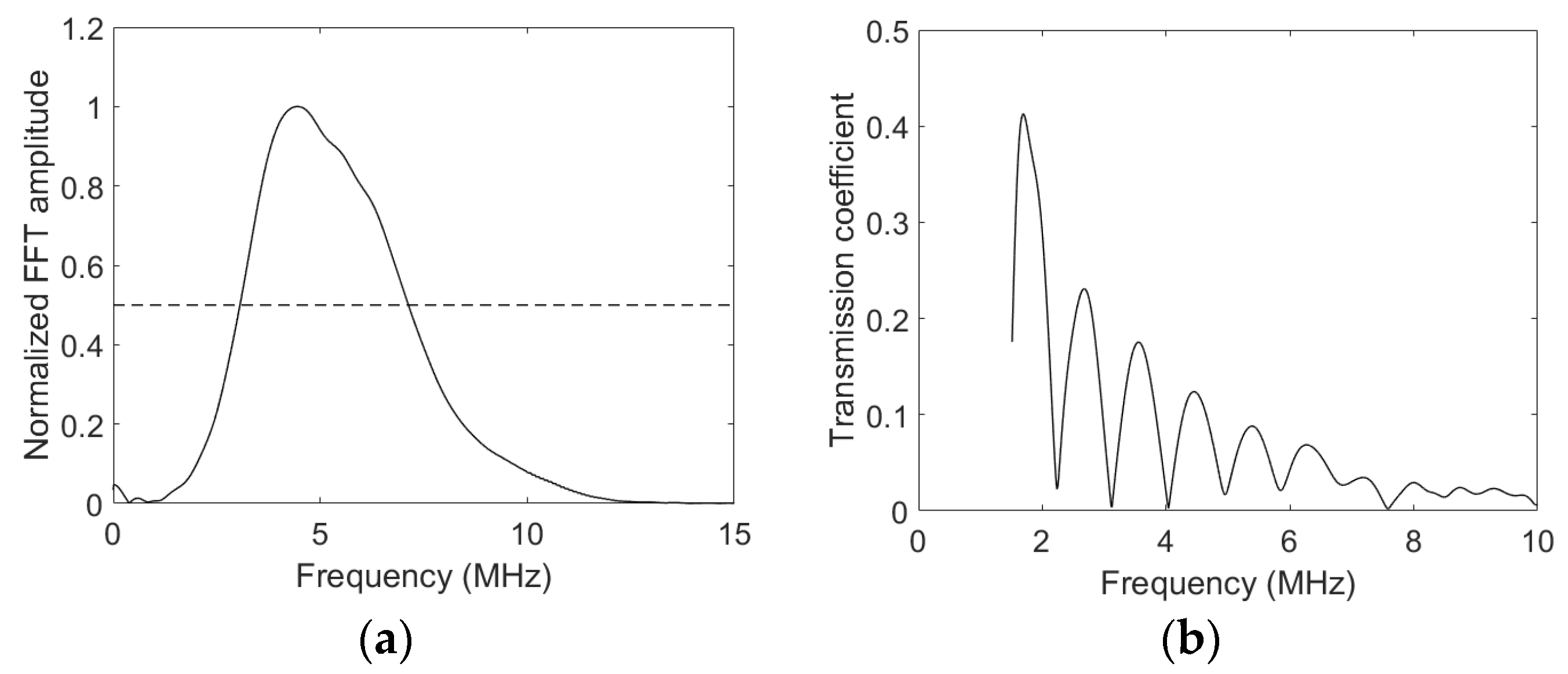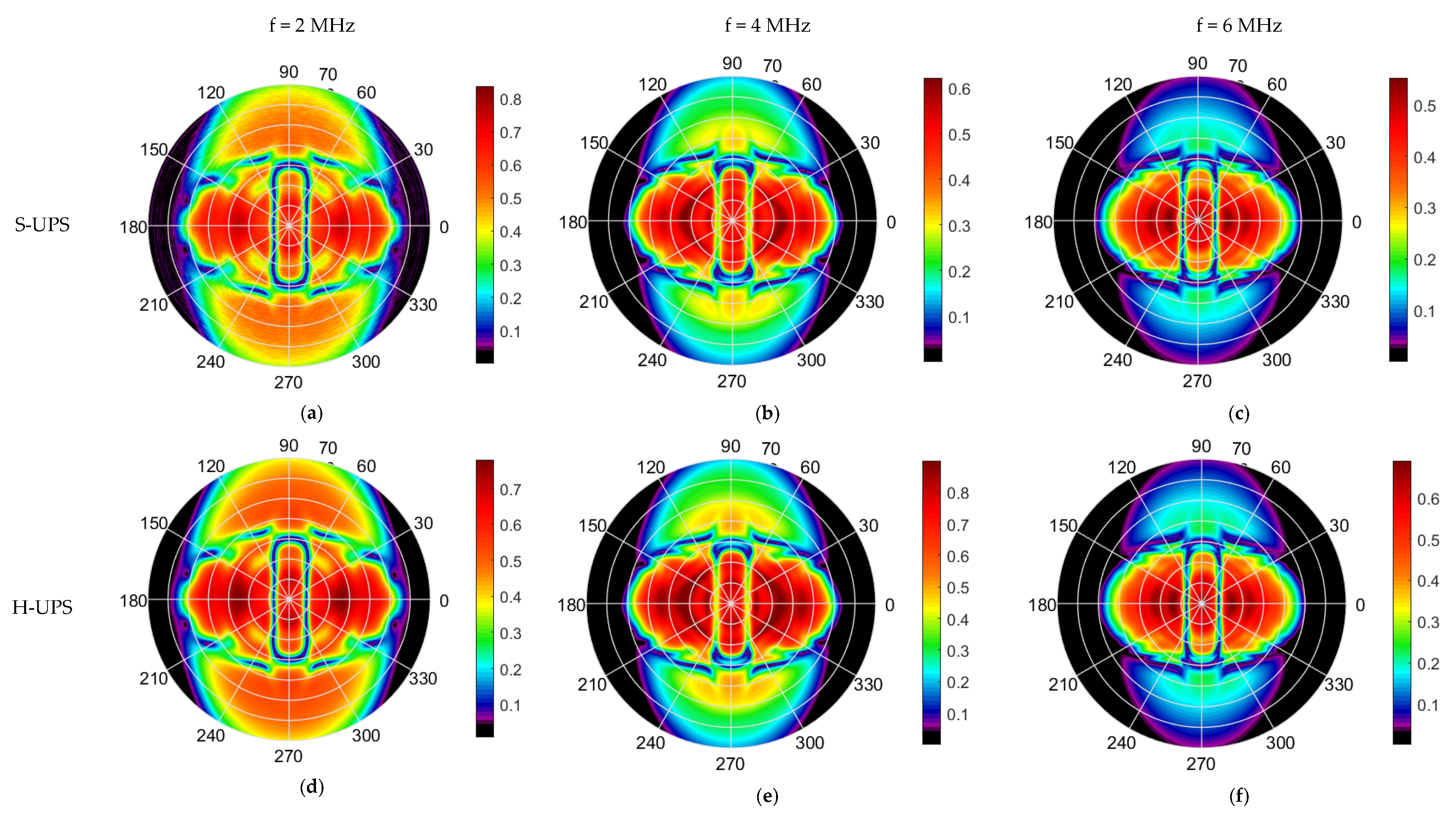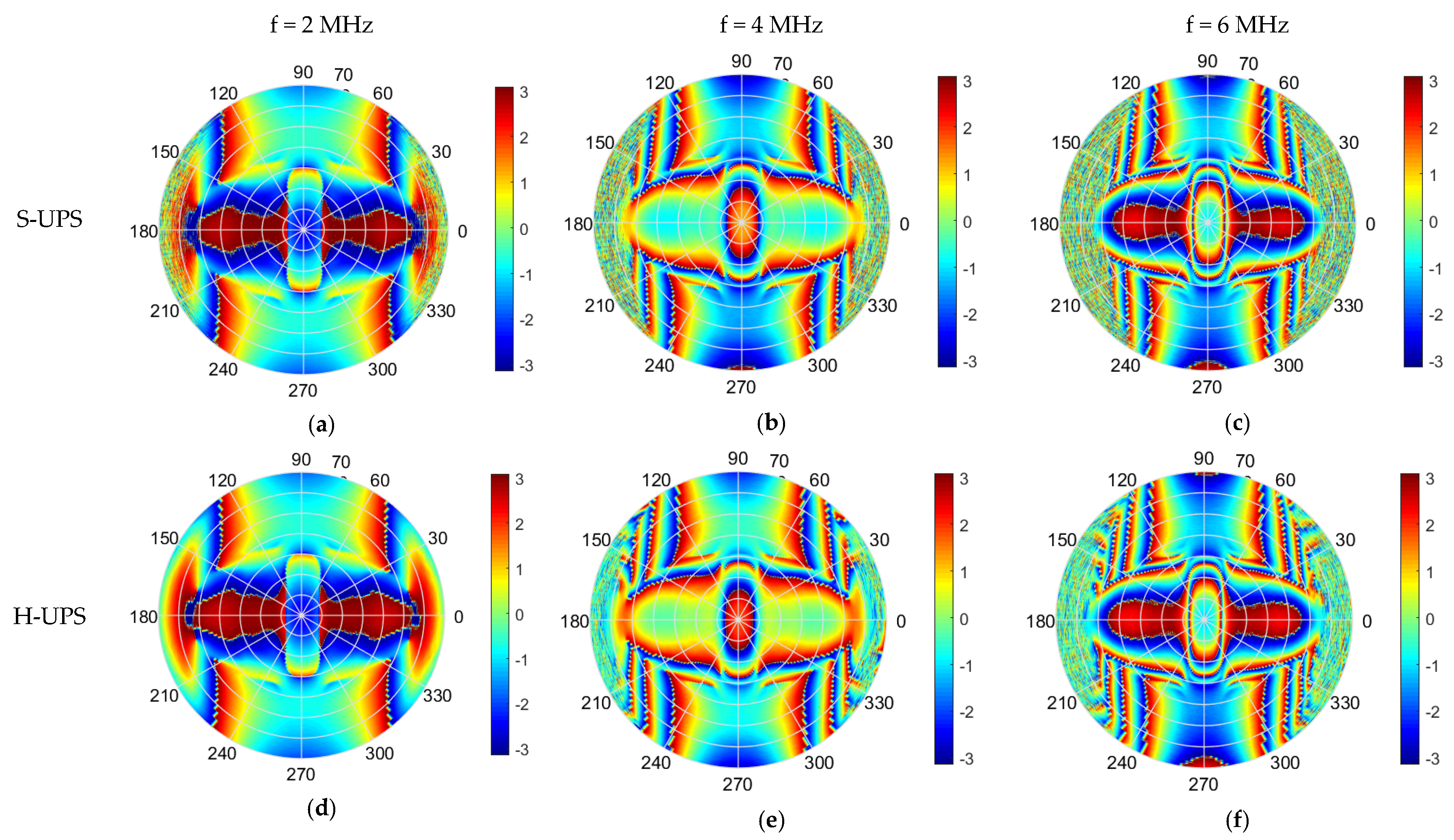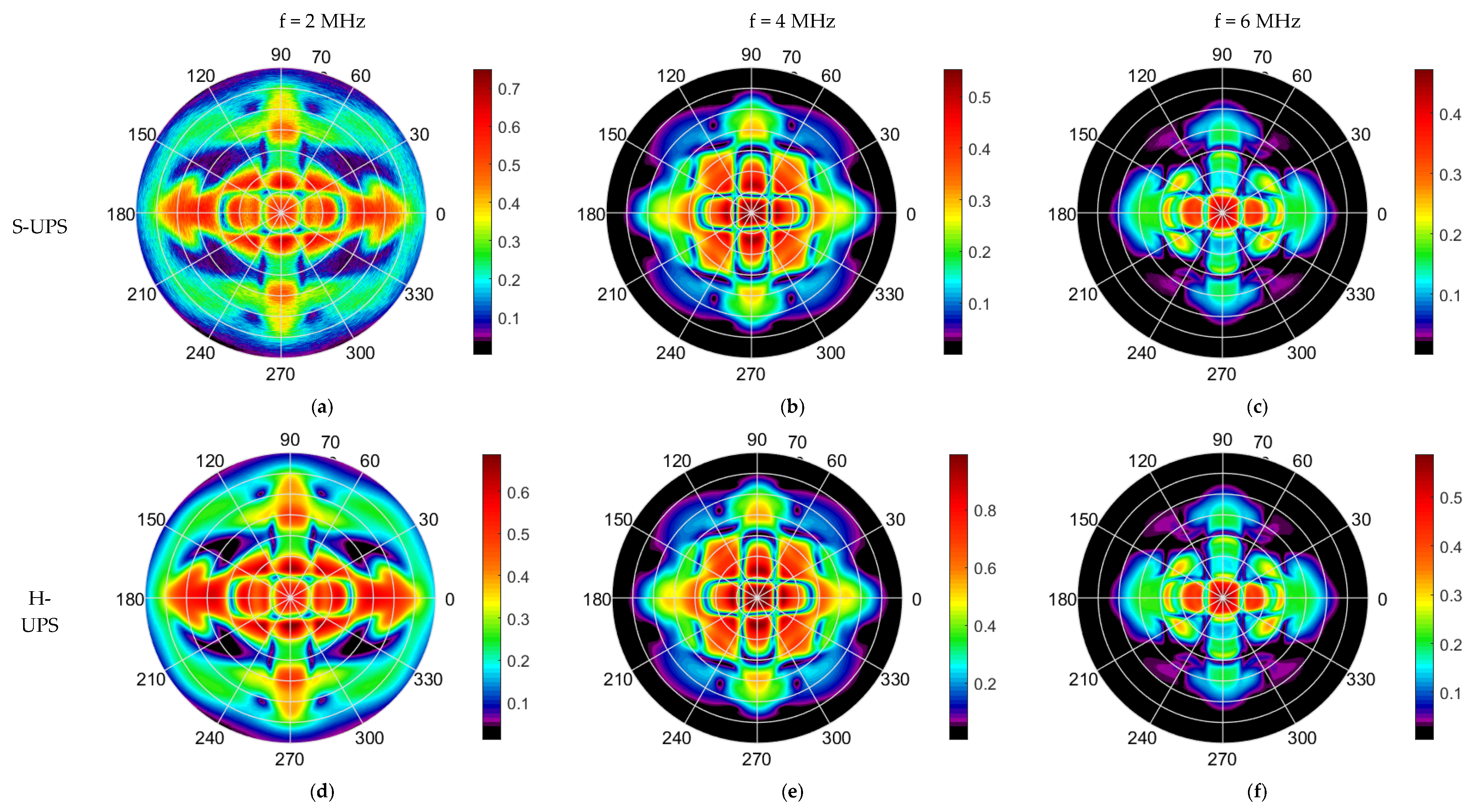Matching Spectroscopy with the Ultrasonic Polar Scan for Advanced NDT of Composites †
Abstract
:1. Introduction
2. Materials and Methods
2.1. Carbon Fiber Reinforced Plastics
2.2. Experimental Setup
2.3. Spectroscopic Analysis Concept
3. Results & Discussion
3.1. UD CFRP
3.2. Orthotropic [02,902]S CFRP
4. Conclusions
Author Contributions
Acknowledgments
Conflicts of Interest
References
- Adams, R.D.; Cawley, P. A review of defect types and nondestructive testing techniques for composites and bonded joints. NDT E Int. 1991, 24, 105. [Google Scholar] [CrossRef]
- Zadler, B.J.; Le Rousseau, J.H.L.; Scales, J.A.; Smith, M.L. Resonant Ultrasound Spectroscopy: Theory and application. Geophys. J. Int. 2004, 156, 154–169. [Google Scholar] [CrossRef]
- Markham, M.F. Measurement of the elastic constants of fibre composites by ultrasonics. Composites 1969, 1, 145–149. [Google Scholar] [CrossRef]
- Su, Z.; Ye, L.; Lu, Y. Guided Lamb waves for identification of damage in composite structures: A review. J. Sound Vib. 2006, 295, 753–780. [Google Scholar] [CrossRef]
- Kersemans, M.; De Baere, I.; Degrieck, J.; Van Den Abeele, K.; Pyl, L.; Zastavnik, F.; Sol, H.; Van Paepegem, W. Nondestructive damage assessment in fiber reinforced composites with the pulsed ultrasonic polar scan. Polym. Test. 2014, 34, 85–96. [Google Scholar] [CrossRef]
- Kersemans, M.; Martens, A.; Degrieck, J.; Van Den Abeele, K.; Delrue, S.; Pyl, L.; Zastavnik, F.; Sol, H.; Van Paepegem, W. The Ultrasonic Polar Scan for Composite Characterization and Damage Assessment: Past, Present and Future. Appl. Sci. 2016, 6, 58. [Google Scholar] [CrossRef]
- Martens, A.; Kersemans, M.; Daemen, J.; Verboven, E.; Van Paepegem, W.; Degrieck, J.; Delrue, S.; Van Den Abeele, K. Numerical study of the Time-of-Flight Pulsed Ultrasonic Polar Scan for the determination of the full elasticity tensor of orthotropic plates. Compos. Struct. 2017, 180, 29–40. [Google Scholar] [CrossRef]
- Kersemans, M.; Martens, A.; Van Den Abeele, K.; Degrieck, J.; Pyl, L.; Zastavnik, F.; Sol, H.; Van Paepegem, W. The quasi-harmonic ultrasonic polar scan for material characterization: Experiment and numerical modeling. Ultrasonics 2015, 58, 111–122. [Google Scholar] [CrossRef] [PubMed]
- Castaings, M.; Hosten, B.; Kundu, T. Inversion of ultrasonic, plane-wave transmission data in composite plates to infer viscoelastic material properties. NDT E Int. 2000, 33, 377–392. [Google Scholar] [CrossRef]







Publisher’s Note: MDPI stays neutral with regard to jurisdictional claims in published maps and institutional affiliations. |
© 2018 by the authors. Licensee MDPI, Basel, Switzerland. This article is an open access article distributed under the terms and conditions of the Creative Commons Attribution (CC BY) license (https://creativecommons.org/licenses/by/4.0/).
Share and Cite
Verboven, E.; Kersemans, M.; Martens, A.; Daemen, J.; Delrue, S.; Abeele, K.V.D.; Paepegem, W.V. Matching Spectroscopy with the Ultrasonic Polar Scan for Advanced NDT of Composites. Proceedings 2018, 2, 536. https://doi.org/10.3390/ICEM18-05458
Verboven E, Kersemans M, Martens A, Daemen J, Delrue S, Abeele KVD, Paepegem WV. Matching Spectroscopy with the Ultrasonic Polar Scan for Advanced NDT of Composites. Proceedings. 2018; 2(8):536. https://doi.org/10.3390/ICEM18-05458
Chicago/Turabian StyleVerboven, Erik, Mathias Kersemans, Arvid Martens, Jannes Daemen, Steven Delrue, Koen Van Den Abeele, and Wim Van Paepegem. 2018. "Matching Spectroscopy with the Ultrasonic Polar Scan for Advanced NDT of Composites" Proceedings 2, no. 8: 536. https://doi.org/10.3390/ICEM18-05458




